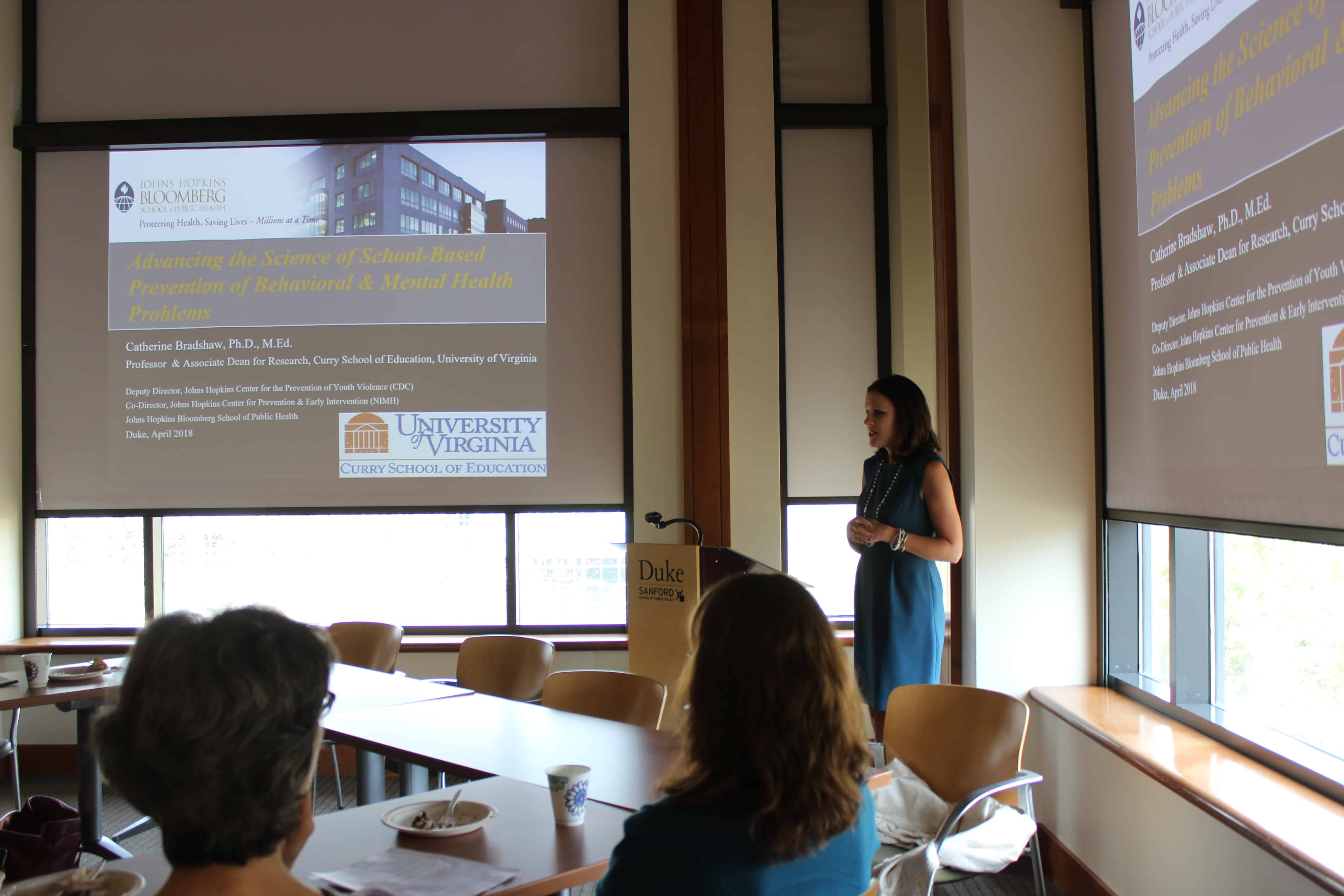Applying prevention programming to address violence in middle and high schools is vital, said Catherine Bradshaw, professor at University of Virginia’s Curry School of Education on Friday. She spoke as part of the Sulzberger Colloquium at Duke’s Center for Child and Family Policy.
“We haven’t seen as much prevention programming in middle and high school,” Bradshaw said, noting much of the literature is centered on early education. However, Bradshaw’s research has worked on applying interventions to later grades. One intervention project, Coping Power in the City, is on-going with Baltimore City high schools.
“There have been issues of crime and violence in Baltimore City, particularly after the death of Freddie Gray,” Bradshaw said, in reference to the uprisings seen in Baltimore after Gray’s passing in April 2015 from injuries obtained while in police custody. “There was just this dramatic and unprecedented increase in violence. And literally fires.”
Baltimore City Public Schools were already no strangers to violence. Sixty percent of campuses had at least one homicide or non-fatal shooting within one-eighth of a mile.
“There was a lot of healing that needed to be done,” Bradshaw said in her talk, “Advancing the Science of School-Based Prevention of Behavioral and Mental Health Problems.”
The Baltimore City school system approached Bradshaw’s team to find solutions to the level of violence students were experiencing and to address mental health—all in collaboration with school police officers. While Bradshaw has done significant work in Baltimore, this particular project required a new approach: it involves 600 ninth graders and also has a police and parent component.
“This was the hardest thing I’ve ever done, to get consent from all these families,” Bradshaw said. “It definitely took a lot of building trust with police and the community to be able to do this kind of work.”
The Coping Power in the City intervention sessions actively worked to create opportunities for dialogue, engagement, and trust-building with school police. Police also received specific training, including in adolescent development, crisis intervention, verbal de-escalation, and cultural proficiency. Bradshaw’s team faced a culture of mistrust of police and contextual norms around violence and retaliation.
“The idea of snitching is a big deal in Baltimore,” said Bradshaw, explaining a cultural aversion to turning to police or even teachers for conflict resolution.
Cultural proficiency is an ongoing research focus for Bradshaw. In another intervention model, Double Check, Bradshaw’s team emphasizes culturally responsive instruction and classroom management. This work fills a space Bradshaw saw regarding research around reducing the disproportionate discipline rates for students of color.
Through a literature review, Bradshaw found that there was significant data on the discipline gap, but the increased awareness was not driving any change.
“The gaps have only increased, they haven’t decreased,” Bradshaw said. “And we have no research-based strategies for how to reduce those gaps.”
The Double Check model serves to give teachers more concrete expectations of what can be done in their classrooms.
“Instead of just talking about a famous person during Black History Month, how can I blend and connect this to culture more authentically?” Bradshaw explained. The model also addresses code-switching, home-school communication, and strategies for recognizing micro-aggressions.
“It’s still very much a work in progress,” said Bradshaw.
Bradshaw’s presentation included several more of her research projects and evidence-based intervention models, from using simulators to help teachers identify school bullying—which she said adults tend to grossly underestimate—to teacher coaching and measuring student engagement through physiological indicators like heart rate.
“The problems are myriad, and I don’t think we’re going to have just one solution here,” Bradshaw said.



